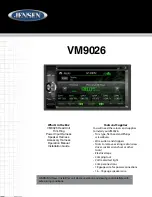
61
Intelligent data (captured historical speed information based on probe data) is used for
optimal routing depending on the day of the week and time of day. Route segments where
traffic flow is typically slow at the given time of day and day of the week are avoided if a
suitable alternative can be found. When calculating the optimal route, the data relevant for the
time of the estimated arrival of the vehicle at the given route point is taken into account. As a
result, ZENEC may suggest a different route during the weekday rush hours, especially in
major cities with frequent traffic jams. See page 62.
4.1.4 Smart Zoom
Smart Zoom provides the following features:
•
While following a route:
When approaching a turn, it zooms in and raises the view
angle to let you easily recognise your next manoeuvre. If the next turn is at a distance,
it zooms out and lowers the view angle to be flat so you can see the road in front of
you.
•
While driving without a planned route:
Smart Zoom zooms in if you drive slowly and
zooms out when you drive at a high speed.
4.1.5 Speed limit warning
Maps may contain information about the speed limits of the road segments. ZENEC is able to
warn you if you exceed the current limit. This information may not be available for your region,
or may not be fully correct for all roads on the map.
Speed warning can be fine-tuned in Warnings. See page 72.
You can also set the relative speed tolerance above which the application initiates the
warning.
The following warning types are available:
•
Audio warning: You receive a verbal warning when you exceed the speed limit with the
given percentage.
•
Visual warning: The current speed limit is shown on the map when you exceed it (for
example
).
You can also choose to see the speed limit sign on the map all the time.
















































